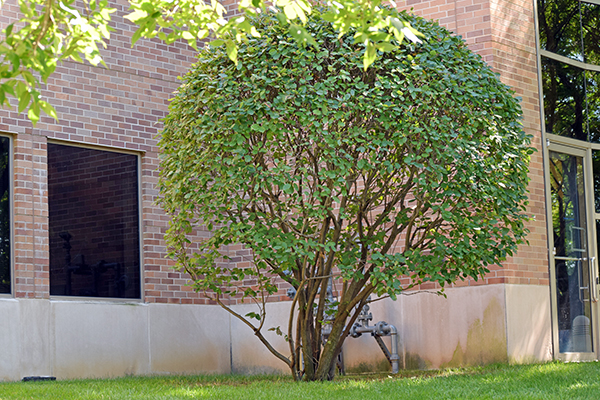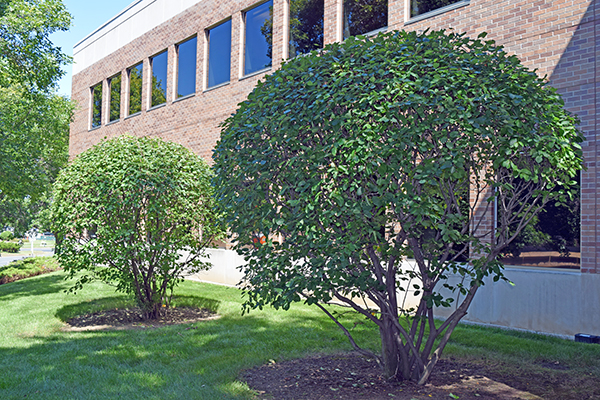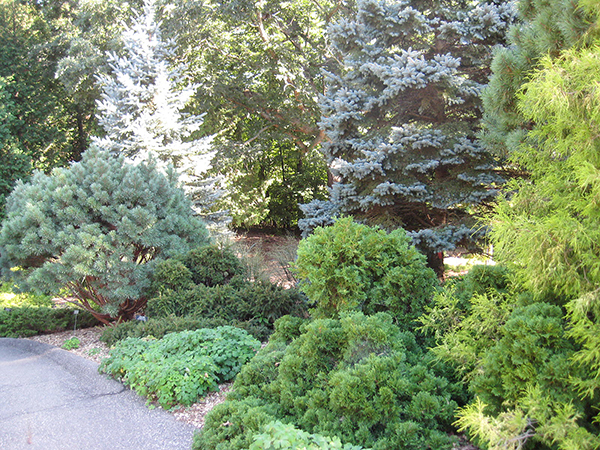Shear Madness: Don’t Prune Circles Around Shrubs

A disturbing phenomenon has literally started to take shape on corporate campuses and residential lawns across the country. Our landscape architecture department has seen pruning at its best – and worst – and they beg of you to please NOT give in to the tempting trend of shearing your shrubs into spheres.
What’s so bad about it?
Shearing of woody plants (that is, trees and shrubs) destroys the plant structure, pure and simple. A plant is selected based on its growth habit and character, and shearing woody material the same way one might prune a hedge loses the intention of the planting.
The perpetrators of ill-informed pruning see the fruits of their labor as well-rounded, but in fact shearing trees and shrubs disfigures the plants. It also creates a harbor for insects and disease problems and is simply not an acceptable horticulture practice.
Why are we seeing it so much?
We’re not sure! It’s possible someone once mistakenly sheared a shrub in this fashion and got the idea that it looks good – and convinced enough people that it’s proper horticulture practice. It’s not. It’s sheer craziness.
What does it look like?
As they say, a picture is worth a thousand words. In a nutshell, instead of this…

Do this…
 The top photo is a classic example of what not to do. The improperly pruned dogwood shrubs have a higher density of leaves on the outside of the plants, which shades out the leaves inside the plants. This creates a proliferation of leaves and damages the plants’ form. The bottom photo shows properly pruned shrubs.
The top photo is a classic example of what not to do. The improperly pruned dogwood shrubs have a higher density of leaves on the outside of the plants, which shades out the leaves inside the plants. This creates a proliferation of leaves and damages the plants’ form. The bottom photo shows properly pruned shrubs.
For more examples of shrub abuse, check out this article from PlantAmnesty.
What’s a better way to prune my plantings?
Susan Frame, the horticulture department director at Chippewa Valley Technical College in Eau Claire, Wisconsin, has been teaching classes for the past five years on landscape design and maintenance. The Powerpoint used in the classes shows proper pruning techniques based on the type of plant you have. Essentially, there are three approaches to pruning – and shearing is not one of them.
- Look for structural problems in a plant, such as broken branches, and remove any you encounter.
- Prune at the right time of year.
- Prune from an aesthetic perspective, being careful to maintain the character of the plant. If the plant has an upright habit, a spreading habit, a vase-shaped habit, for instance, make sure that, when you’re done, the plant looks the same only with less material.
With fall nearly upon us – a logical time of year to prune plants – keeping these tips and techniques in mind will help maintain the health of your plants – and avoid malpruning.
Visit our landscape architecture page for more about the services offered by our landscape architecture department..

Post a comment: